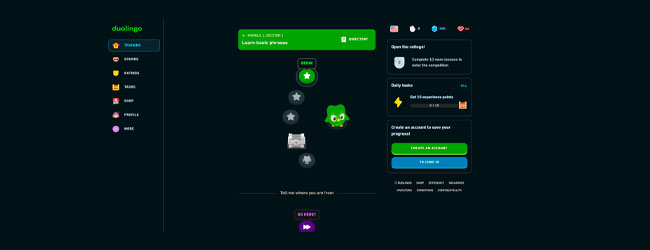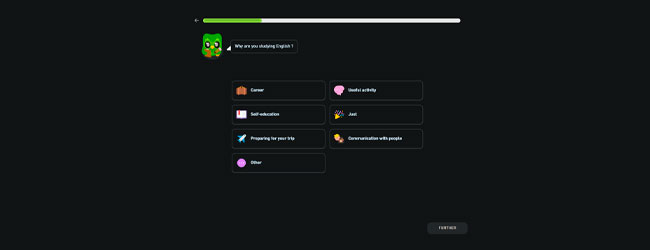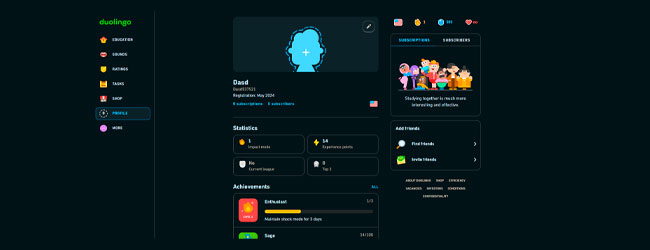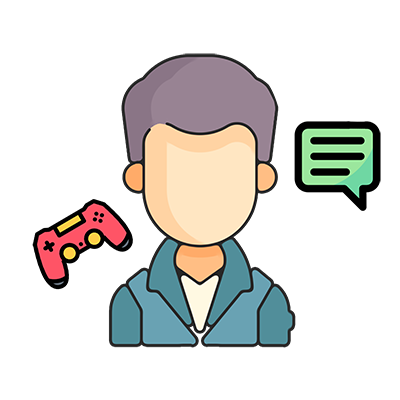Language Sounds: The Blind Experience with Duolingo
The education sector is becoming increasingly inclusive thanks to modern technologies, and online language learning platforms are no exception. In our study, we focus on the unique experience Duolingo offers to blind users. We will examine how the platform addresses accessibility challenges, as well as identify the advantages and disadvantages faced by students with visual impairments.
The aim of this article is to provide readers with a comprehensive understanding of whether Duolingo becomes a tool that facilitates language learning for everyone, regardless of visual ability.

About Duolingo: History and Key Features
Duolingo is an educational platform offering online foreign language courses. Founded in 2011, Duolingo has become a popular tool for those wishing to learn a new language. The platform offers courses in more than 30 languages, including English, Spanish, French, German, and many others.
A distinctive feature of Duolingo is its use of a gamified learning approach. Users can engage in various exercises, tests, and games at their own pace, enhancing their language skills. The course is structured to gradually increase in complexity, and the platform allows users to track their progress as they advance through the lessons.
Duolingo is available both on the website and as a mobile app for convenience on various devices. The core functionality is provided for free, but there is also a Duolingo Plus subscription available, offering additional features such as ad-free learning and offline mode.
Official website: https://en.duolingo.com

How Duolingo Works
Duolingo operates on a combination of interactive exercises, gaming elements, and a bilingual learning approach, meaning direct translation of words, phrases, and sentences. Here are the main steps a user goes through when using Duolingo:
- Registration and Language Selection: After registering on the platform, you need to choose the language you plan to learn.
- Level Assessment: Before starting, Duolingo offers some tests or exercises to determine your initial level of knowledge. If you already know your level, you can skip this step.
- Learning the Basics: Regardless of the chosen language, you will start with the simplest words, gradually moving on to more complex exercises.
- Lessons and Exercises: Duolingo is divided into short lessons that include various types of exercises. These exercises may involve translating texts, pronouncing words, choosing the correct answer, and other tasks aimed at developing different language skills.
- Gaming Elements: The platform incorporates gaming elements such as points, levels, achievements, and more. This makes the learning process more engaging and motivating.
Experience Using Duolingo by Blind Users
Regarding the experience of using the platform, we have mixed feelings, but let’s go through everything in order.
We were pleasantly surprised by the fact that registration on the platform is not required before completing the first task of the day. You can assess your language proficiency and start the first task without prior registration. If you enjoy the platform’s experience and want to save your progress, you will then need to register.

To start using Duolingo, go to the main page and find the “Start” link. After clicking the link, you will be presented with a list of languages to choose from for your learning goal. You can navigate through the list using the up and down arrow keys, and the “b” key to move between the language selection buttons. Additionally, for each language in the list, information about the number of students learning that language is provided.
After choosing a language, the first inconveniences arise. The platform suggests going through an interview to start learning the language. The interview is step-by-step and includes questions about how you found out about Duolingo, your motivation for learning the language, your current proficiency level, and the amount of time you’re willing to dedicate to learning each day. You will also need to take tests to automatically determine the starting point of language learning or choose to start from the very basics.

Some steps of the interview might contain graphical information but don’t duplicate it in text form. For blind users, these steps appear as a simple “Next” button without additional information. Despite the lack of informativeness in some steps, the interview is generally accessible and quick to complete.
After finishing the interview, we immediately proceed to the first task. The workspace is concise and not overloaded with unnecessary elements. A minor inconvenience is caused by two unlabeled buttons at the beginning, but through trial and error, I figured out that the first button is for finishing the task, and the second is for repeating the phrase of the current exercise. Above this button, you can find the goal of the exercise, for example, “write the phrase in your native language,” and below the button, the phrase in the language being studied is written. If it’s missing, use the button for repetition, then scroll down with the down arrow.

Following the phrase in the language you’re learning, there are buttons with translations of words. For example, when learning German, the first task might be the phrase “Hallo Maria,” which you need to translate into your language. Simply activate the buttons for the words “Hello” and “Maria,” and then at the very bottom, press the “Check” button.
What pleasantly surprised me was the audio accompaniment. Phrases are pronounced clearly and understandably, a successfully completed exercise has its own notification sound, as does an exercise completed with errors or the completion of a task. There is also a button that allows you to skip an exercise, and in some exercises, a button appears that opens a field for entering text from the keyboard.
After pressing the “Check” button, you will be shown a message with the result of the exercise. For example, if you answered correctly, you will be praised, and in case of an error, the correct answer will be shown to you. It’s worth noting that the cursor automatically moves to the “Next” button after checking the exercise; to review the result, use the “Up Arrow” key several times.

One downside is that some exercises do not work correctly with various screen readers. For instance, when using NVDA, there were problems displaying the editing field in one of the exercises, although it was accessible when using JAWS. Otherwise, the process of completing exercises and tasks is straightforward and not difficult.
Upon completing a task, you will be invited to review the results and go through the registration process. Registration is very simple and includes filling out a few fields:
- Age
- Name
- Password
After completing this step, we are automatically redirected to the homepage. There, by going to the “Task of the Day” section, you can proceed to the next tasks.

If you don’t rush and first explore the page from start to finish, all the information will eventually be found. We thought that the project was not very informative, but in reality, the main thing is not to rush.
Regarding the review of the results of a completed task, it is worth noting, as a downside, the lack of informativeness of the data through a screen reader. They are displayed, but unfortunately, the screen reader announces them as a set of numbers without any meaningful context.
In conclusion to our study, it becomes clear that language learning technologies can be successfully integrated into the lives of the blind. Duolingo, as a platform, provides tools that make learning accessible and interesting. Our experience highlights identified inconveniences, such as missing labels on some elements and some exercises not working correctly with different screen readers, indicating the need for further improvements in accessibility. Also, sound design and concise design play a key role in providing an accessible and comprehensive learning experience for the blind. In the future, we see potential for expanding the accessibility and functionality of Duolingo.
